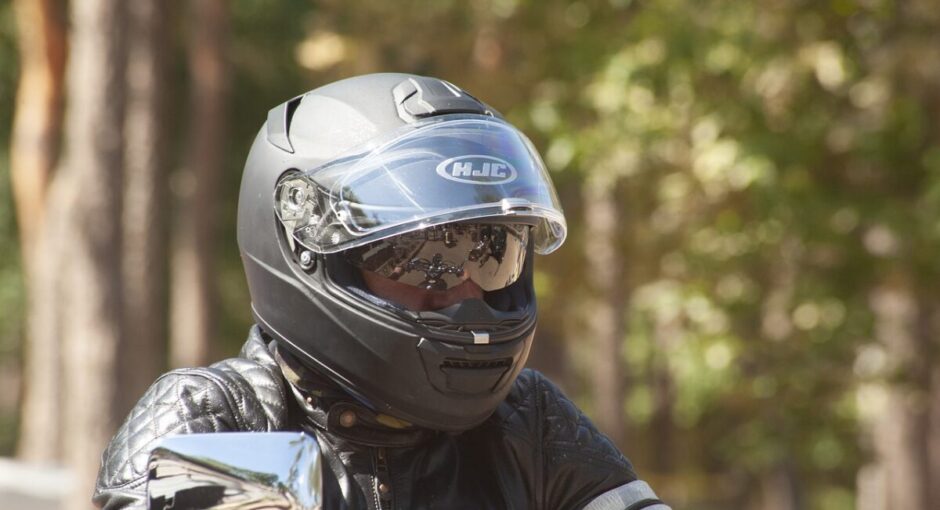The company’s survival depended on the police contract, so Moto Guzzi dusted off Carcano’s V-twin concept and conceived the V7 — so called because of the V shape of the cylinder layout and its 700cc capacity. A civilian version was shown at the 1965 Milan show, but with this workaday motorcycle Moto Guzzi was riding down a road far from its winning ways on the racetrack.
The company’s fortunes continued to unravel. Moto Guzzi entered receivership in 1966, and came under new management early in 1967. Fortuitously, Lino Tonti was installed as Moto Guzzi’s chief engineer, and along with Tonti came test rider/racer Luciano Gazzola. Tonti’s influence was considerable, as he had been connected to several different manufacturers over the years, including Aermacchi, Benelli, Bianchi, Gilera and Mondial.
Tonti soon began tinkering with the V7, which had gone into production in 1967. In an attempt to secure lucrative American police contracts, he enlarged the engine to 757.48cc and provided two tuned models for acceleration tests. Tonti also began chasing speed records using the V7 platform. He increased the compression, installed Dell’Orto SS carburetors and a fifth gear in the automotive-style transmission, which delivered power to the rear wheel via shaft drive. Using the standard V7 frame, fork and swingarm, the tuned-for-speed machines weighed less than 350 pounds, and set several speed records at Monza in 1969. According to Ian Falloon’s book The Moto Guzzi Sport & Le Mans Bible, Tonti’s V7s had a top speed around 143mph.
Moto Guzzi also put the V7 to use on the track, but the V7’s tall, so-called “loop frame” proved to be a shortcoming, with limited ground clearance. Without redesigning the engine cases, Tonti incorporated small changes to provide more room, including moving the generator from atop the engine to the front so the engine could be raised higher in the frame.
Moving to the Sport
These speed and track successes led Moto Guzzi to believe the company could introduce a new sporting motorcycle, one with a top speed of 125mph, weighing less than 440 pounds (200 kilograms) and including a 5-speed transmission.
Tonti decided an updated chassis was required for this sporting machine, and working out of his own shop he handcrafted two special frames. Although the ultimate intention was to produce street legal machines, these were first developed as racers.
Tonti’s frame incorporated triangulated straight tubes, and thanks to the relocated generator it had a lower backbone. The lower frame rails were removable to allow easy engine access, and lighter Ceriani forks, thinner stainless steel fenders and a smaller generator all helped trim weight. With one of the Monza record-setting V7 engines in the frame, Tonti told upper management that factory rider Gazzola was able to shave six seconds off his previous lap time. According to Greg Field’s book Moto Guzzi Big Twins, that six-second claim was a fib designed to grease the way to production. According to Falloon, Tonti crashed and broke his leg during testing. Unwilling to give up his role in testing the motorcycle he was creating, Tonti had doctors set his leg in a riding position, carrying his crutches with him on the machine.
Yet after all of the excitement, Moto Guzzi’s production manager decided he didn’t want the expense of launching a brand-new motorcycle. Upset by this development, Tonti tendered his resignation, but after reviewing the disagreement, Moto Guzzi management finally gave the V7 Sport the green light late in 1970.
Telaio Rosso
Moto Guzzi’s 50th anniversary was in 1971, and Tonti wanted the V7 Sport in production for that model year. However, manufacturing tools and dies weren’t ready, plus the factory was struggling with labor disruptions. Determined to have a V7 Sport for 1971, the racing department began hand building pre-production prototypes. To meet international homologation rules for production racing, Moto Guzzi had to build at least 100 V7 Sports in 1971, resulting in the Telaio Rosso (literally, red frame) V7 Sport, easily identifiable by their red-painted chrome-moly frame.
Displacement was 748cc with a 9.8:1 compression ratio and cylinder bores were chrome-plated. A high lift camshaft was gear driven via the crankshaft, with Dell’Orto square-slide VHB 30mm carbs, complete with accelerator pumps, feeding the fuel. To cope with the 70 horsepower at the crankshaft (52 at the rear wheel), the lower end was stiffened and the forged steel, single-piece crank and split connecting rods were polished and assembled with stronger nuts and bolts. Lubrication was by a high-pressure crankshaft-driven pump with filtration via wire screen. A dry, 2-plate clutch transferred power to the 5-speed gearbox.
With an estimated 150-204 built, it should come as no surprise that today the Telaio Rosso V7 Sport is the Holy Grail for Moto Guzzi collectors. Engine cases in the Telaio Rosso feature a rough sand cast, and that’s the easiest way to discern an original from a homebuilt replica.
“Regular” V7 Sports production started in November 1971, with production bikes using a thicker steel-tube frame instead of the chrome-moly tubes found on the Telaio Rosso. Moto Guzzi planned to continue painting the frames red, but a decision was made to finish them in either black or silver. Also, engine cases were now a smooth die cast, and the transmission featured external webbing. According to Falloon, crankshaft and connecting rods were no longer specially polished, and transmission gears were updated to deal with what was a rather fragile gear set in the original. For the U.S. market, the gas tank and toolboxes were finished in red (maroon), green or lime green.
Essentially a factory-built road racer, the V7 Sport was fast and agile. In one Italian magazine test, the V7 Sport was clocked at 125mph. Pitted against the Ducati 750 GT, Honda CB750, Kawasaki H2 750 and Laverda 750 SF, the V7 Sport proved fastest. This was the nascent age of the Superbike, and although other manufacturers were producing quick machines, not all of them could handle as well as a Moto Guzzi. The V7 Sport lasted only a few short years, however, and was discontinued in 1974 after De Tomaso took over Moto Guzzi in 1973.
From Steven to Don
When Don took delivery of his rusty V7 Sport, his first thought was to dismantle the bike. Prior to taking it completely apart, he and friend Eric King pulled the heads to check the chrome bores. They were clean and weren’t flaking, so they put the heads back on, changed the oil and cleaned the carbs. With fresh gasoline in a test tank and a hot-wired ignition system, Don says the bike turned over four times and purred to life — and actually settled into an idle.
Encouraged, Don commenced disassembly. The exhaust header nuts were stuck tight, so he hung the engine and frame in his garage so he could pour penetrating oil around the exhaust pipe retaining nuts. Every once in a while, he’d walk by the carcass and give the nuts a good crack. It took two months, but they finally broke free.



